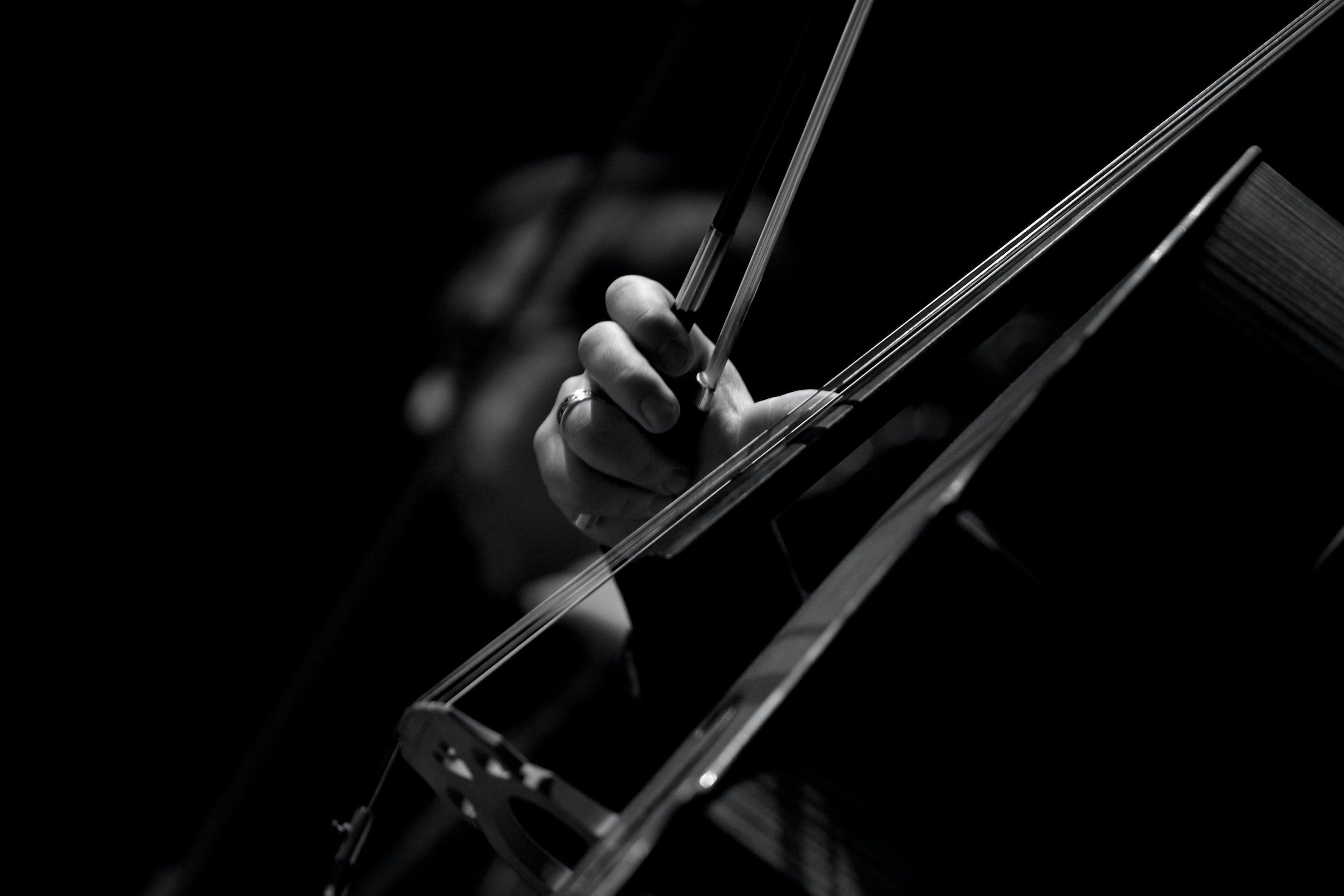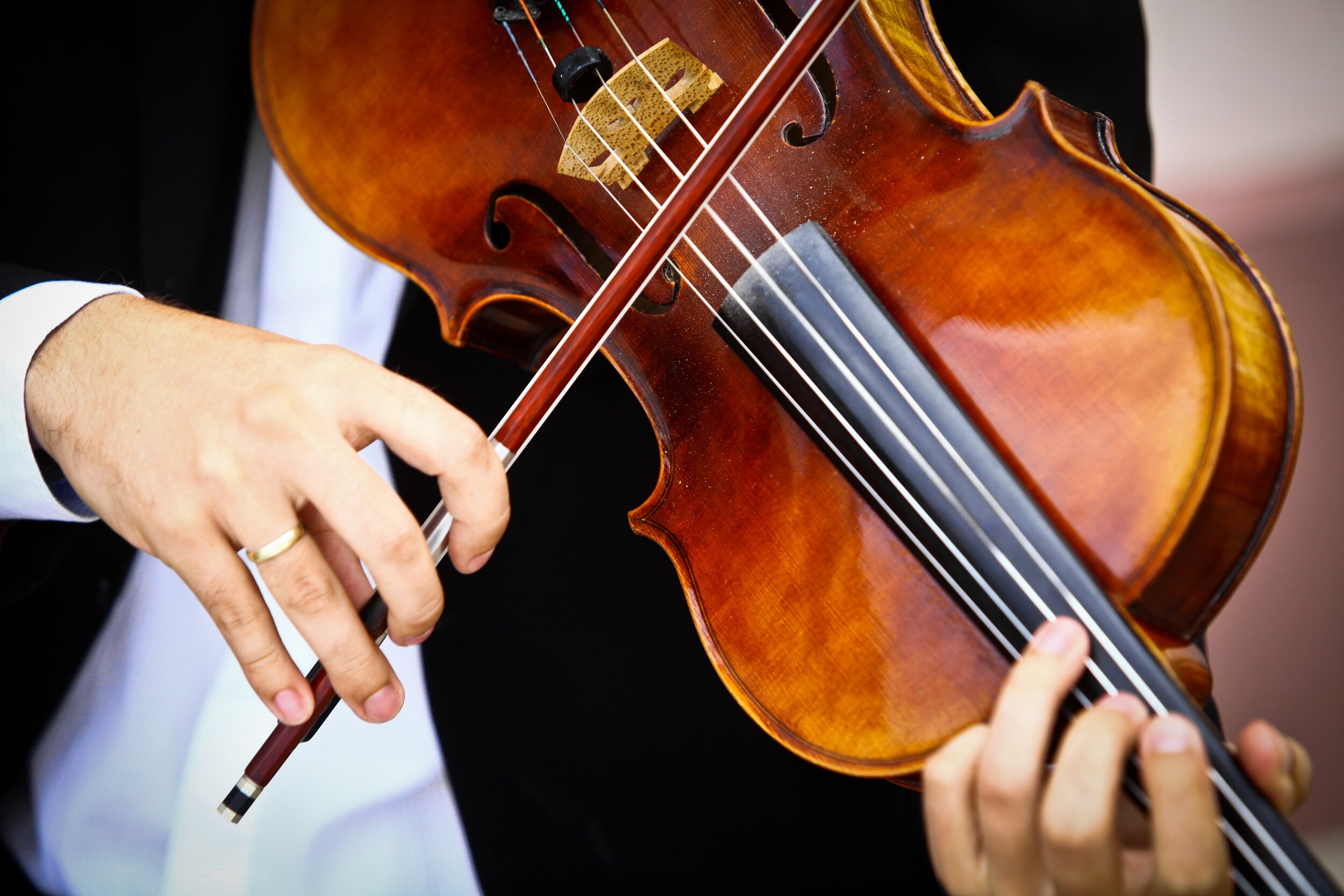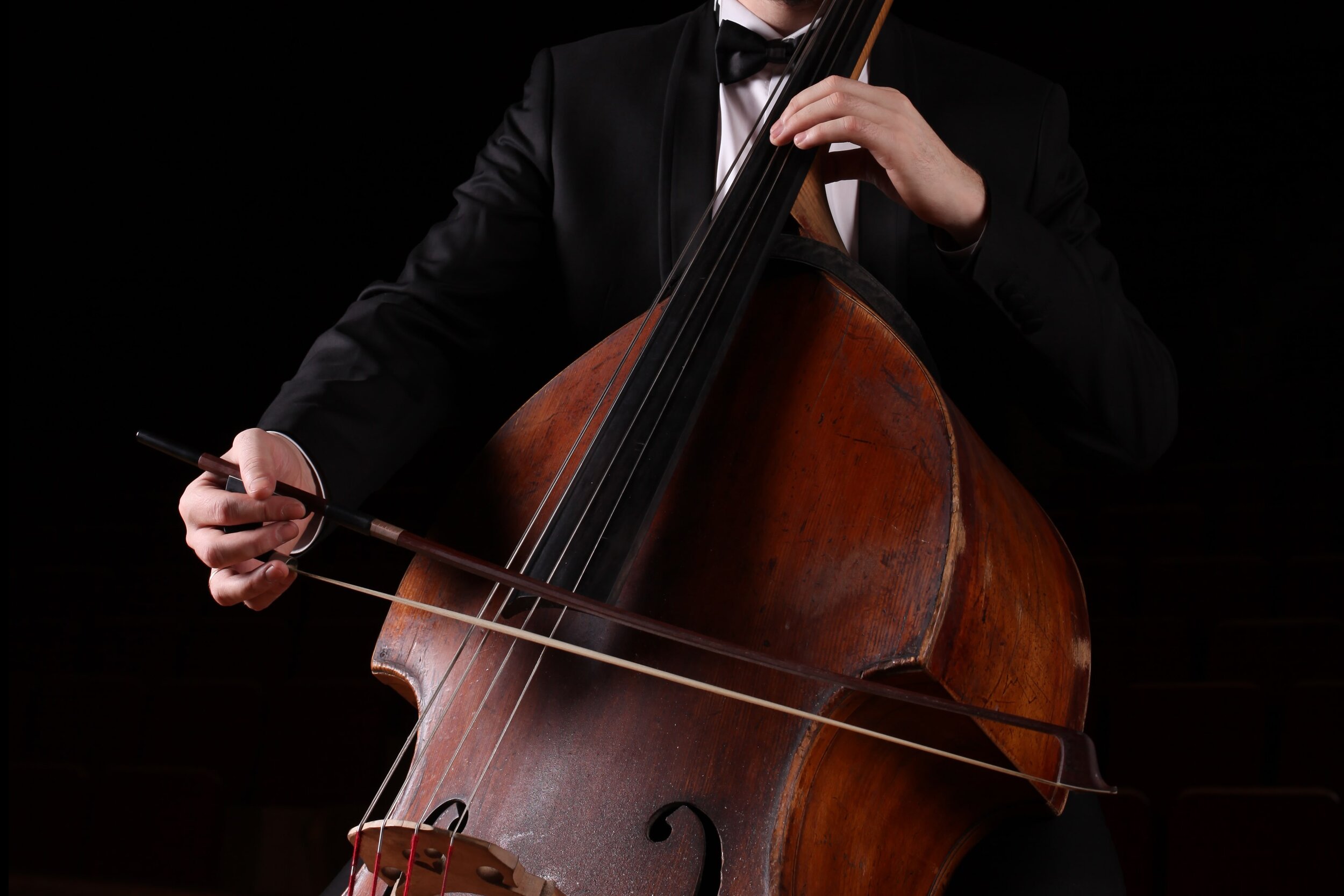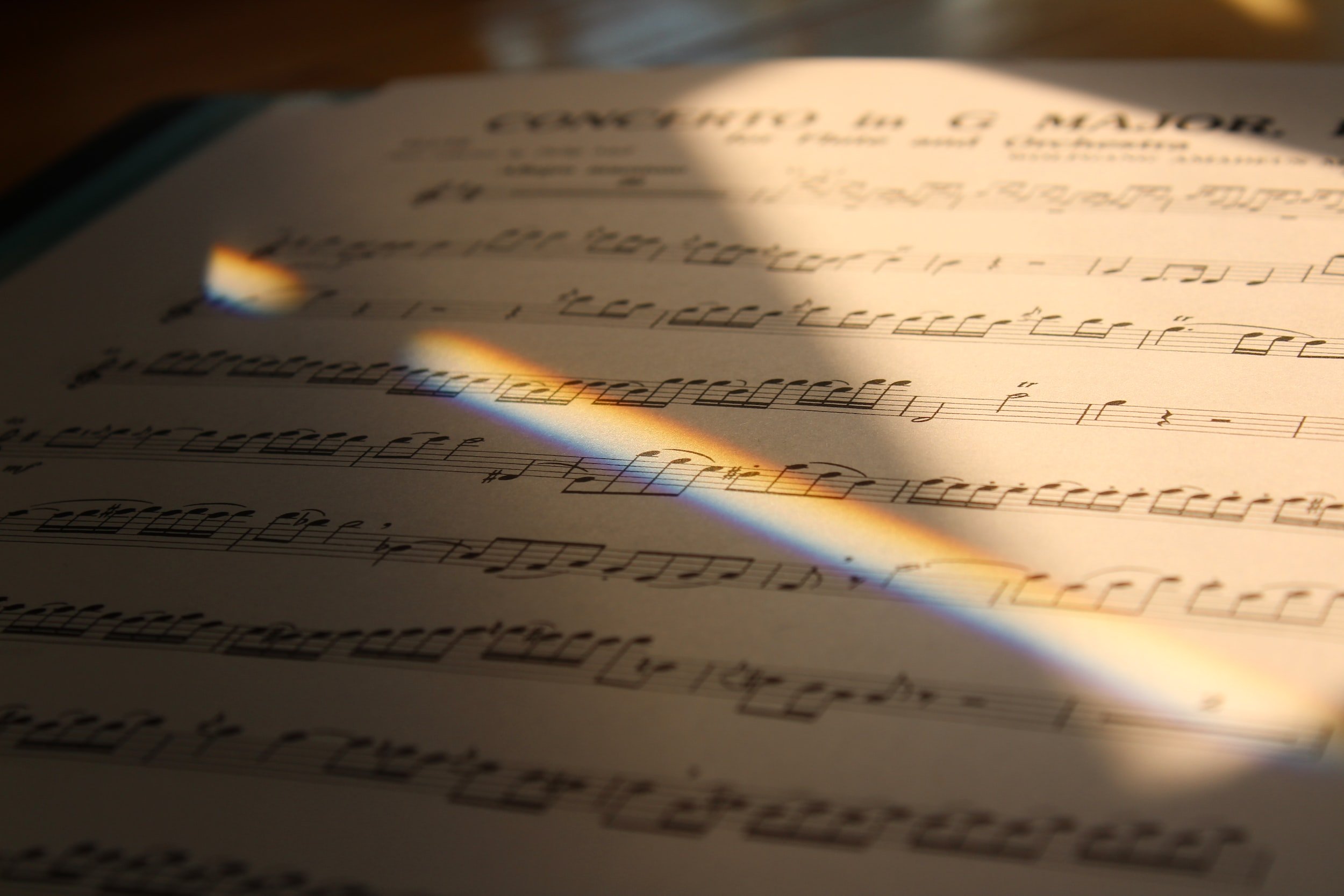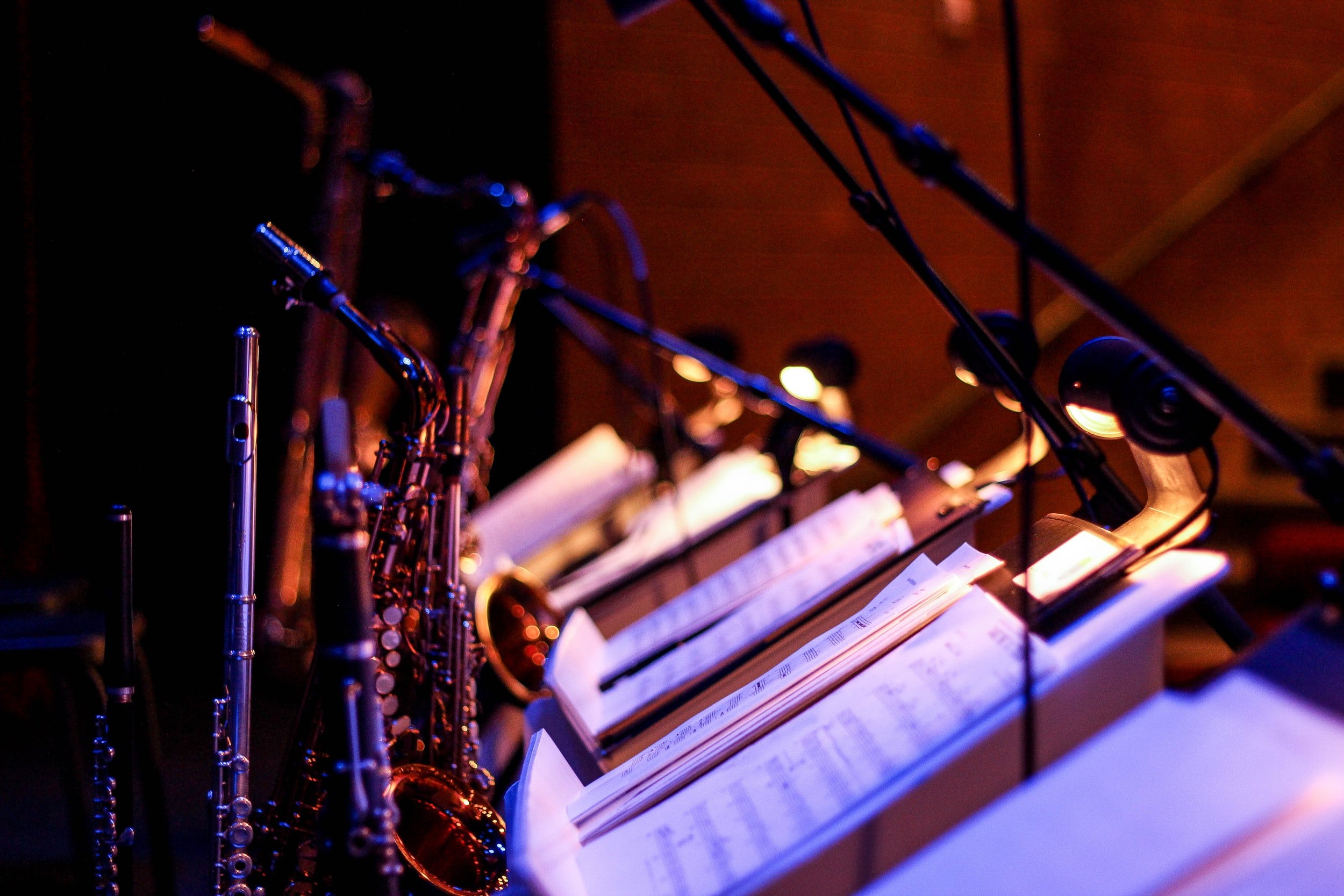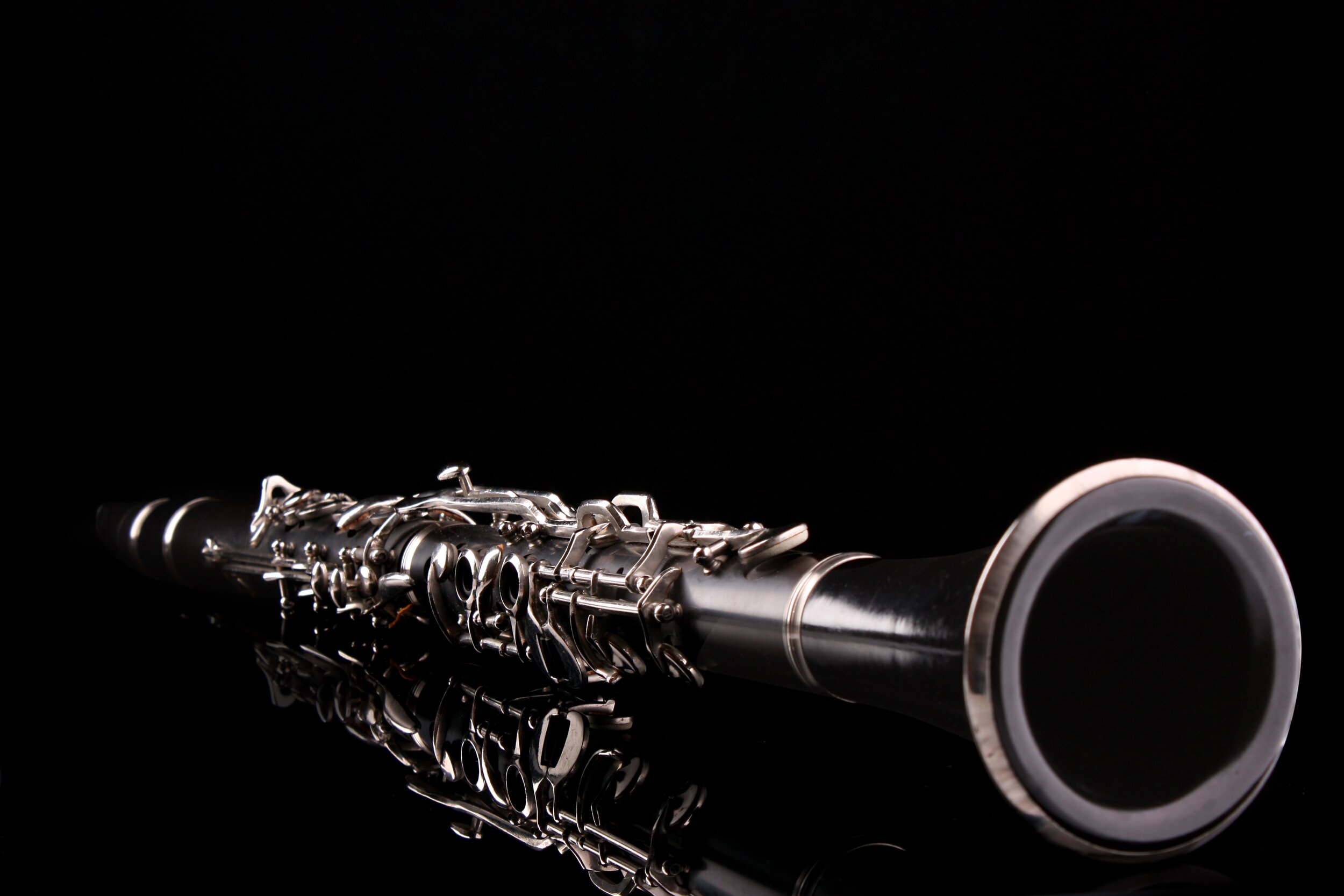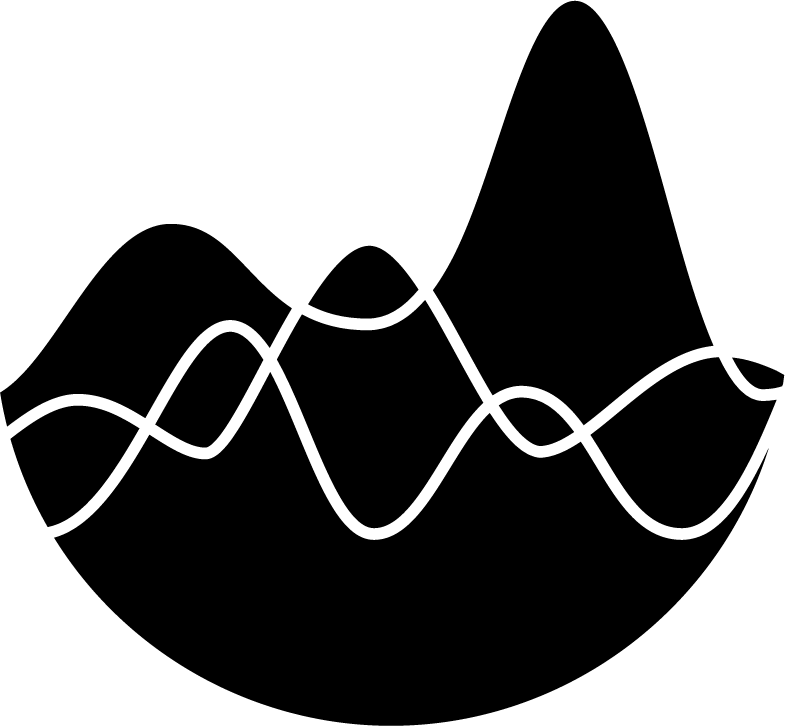Bowed Strings | Cello
CELLO.
The cello is substantially larger than the violin and viola. Also called violoncello, this instrument is placed in front of a sitting player, held between the legs, propped up by a metal endpin. In comparison with the violin and viola, the cello:
can perform all techniques possible on the other two.
is almost as agile as the violin.
can match all bowings possible on violin and viola.
is tuned exactly one octave lower than the viola.
is usually written in bass clef, though higher passages should be written in tenor clef or treble clef to avoid excessive ledger lines.
is brighter than viola in higher registers, perhaps matching the brilliance of violin.
is more dark and powerful in lower registers than viola.
can produce harmonics more easily and clearly than violin or viola.
In the last century, the level of cello playing has risen drastically. Good players are expected to have a level of proficiency on the instrument rivalling violinists. Many leading cellists have commissioned solo pieces and concertos, expanding the literature available for this instrument.
Although the cello often takes on the baritone or bass role of the string section, it can also function as the tenor, alto, or even soprano voice. In the lower register, it often doubles the bass or other bass instruments, such as bassoon and trombone. In the mid-range, cello can contribute inner notes of harmonic constructions. The cello has a particularly powerful upper register that can sing, when properly scored, with brilliance, grace, and power over a full string section, or even an orchestra. The cello is equally suited for aggressive, sweet, rhythmic, or heroic musical gestures.
First to fourth finger span only a third on cello, instead of the fourth that is possible with violin. This makes wide leaps difficult, and shortens the intervals possible for multiple stops and tremolos. In thumb position, however, a span of a fourth can be reached. This technique is commonly used when playing in higher registers, performing octave double stops in lower positions, or to enable touch-4 harmonics and tremolos of larger intervals on the same string.
Playing with the thumb is indicated by the graphic:



